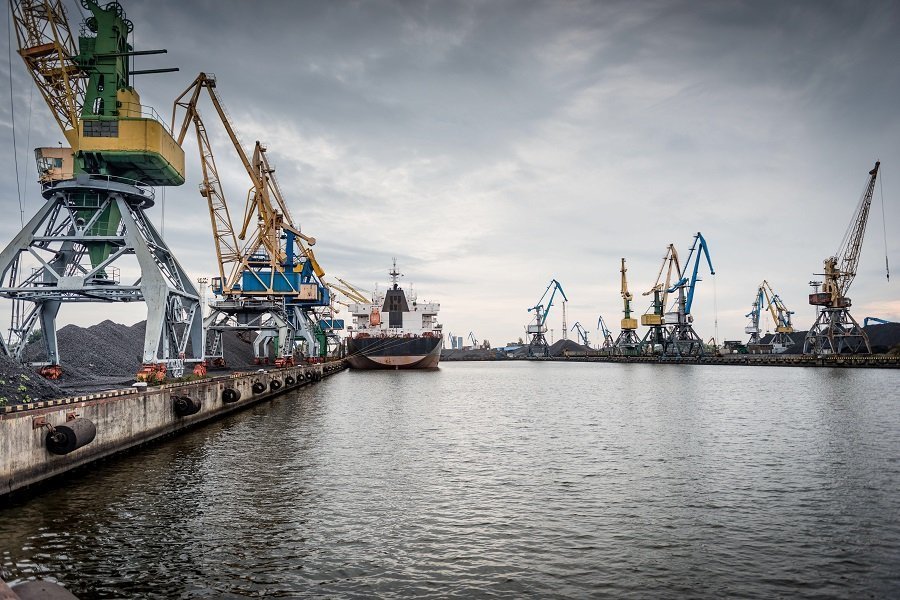Breakbulk refers to all cargo that does not fit into containers, except for dry and liquid bulk loads. Such loads are usually unitized and can include everything from forest products to steel beams, paper pulp to metal drums.
Before the mid-1800s, every load was what we call “breakbulk” today. However, with the discovery of containerization on April 26, 1956, and the standardization of containers, the cargo transportation industry changed.
Today, the transportation of non-containerizable loads has become more expensive and challenging because it typically requires specialized equipment and vessels. Specifically, with the emergence of large-capacity vessels, container transportation has become more efficient, and the market share of breakbulk transportation has decreased.
However, there is still a need for breakbulk transportation in many sectors. Especially for transporting large, heavy, and oddly shaped loads, container transportation may not be suitable. Such loads can be transported using specialized vessels and equipment.
Moreover, in some regions, the lack of ports suitable for container transportation may cause breakbulk transportation to continue. Especially in developing countries, special ports may need to be built to transport project cargo.
As a result, even though breakbulk transportation is more expensive and challenging than container transportation, it is still an important need for many sectors. Therefore, the development of specialized equipment and vessels for breakbulk transportation continues.
The Decline of the Breakbulk Market
Developments in container transportation have led to the decline of the breakbulk market. Especially with the construction of container ports, it can create more favorable conditions for container transportation, while offering fewer opportunities for breakbulk transportation.
However, breakbulk transportation still plays an important role in many sectors. Especially, there are quite a few loads that need to be transported with specialized equipment and vessels for the construction and energy sectors.
Breakbulk and Other Types of Transportation
Breakbulk transportation competes with other types of transportation. Especially, roll-on/roll-off ships and pure car and truck carries (PCTC) ships can transport breakbulk loads.
Roll-on/roll-off ships are used especially for vehicle transportation. However, these ships can also carry other loads. PCTC ships are used especially for automobile transportation. However, these ships can also carry other loads.
Container ships can also transport breakbulk loads. Especially, special container units can be used for oddly shaped loads. Additionally, bulk operators can transport breakbulk loads by putting large pieces into cargo holds.
The Future of Breakbulk Transportation
The future of breakbulk transportation is uncertain. Especially, the rapid development of container transportation increases the difficulty and cost of breakbulk transportation.
However, breakbulk transportation is still an important need for many sectors. Especially, there are quite a few loads that need to be transported with specialized equipment and vessels for the construction and energy sectors. Therefore, the development of specialized equipment and vessels for breakbulk transportation continues.
As a result, even though breakbulk transportation is more expensive and challenging than container transportation, it is still an important need for many sectors. Therefore, the development of specialized equipment and vessels for breakbulk transportation continues.
Advantages and Disadvantages of Breakbulk Transportation
Breakbulk transportation has some advantages and disadvantages compared to container transportation.
Among the advantages are the ability to transport loads that do not fit into containers and the ability to transport them with specialized equipment and vessels. Also, container transportation may not be suitable for the transportation of especially large and heavy loads. In such cases, breakbulk transportation is preferred.
Among the disadvantages are that it is more expensive and challenging than container transportation. Especially, it requires more cost and time due to the need for specialized equipment and vessels. Additionally, some problems may occur in the transportation process due to a lack of a standardized system like in container transportation.
New Technologies in Breakbulk Transportation
The use of new technologies is also increasing in breakbulk transportation. Especially, the development of innovative crane systems and specialized vessels enables the more efficient and safe transportation of loads.
For example, using a floatable crane system to lift the project in an underdeveloped region eliminates the need to build a special port, reducing costs.
Also, the development of specialized vessels in breakbulk transportation provides new opportunities. Especially, vessels specially designed for the transportation of large and heavy loads can make the transportation process safer and more efficient.
Conclusion
Even though breakbulk transportation is more expensive and challenging than container transportation, it is still an important need for many sectors. Especially, for transporting large, heavy, and oddly shaped loads, container transportation may not be suitable.
However, developments in container transportation have led to the decline of the breakbulk market. Therefore, the development of specialized equipment and vessels for breakbulk transportation continues.
As a result, even though breakbulk transportation is a different transportation method than container transportation, it is still an important need for many sectors.

